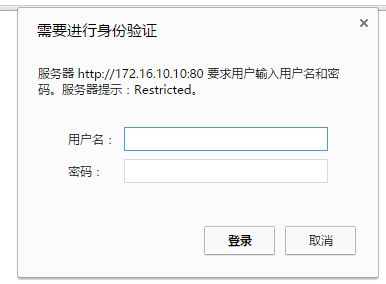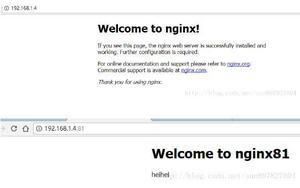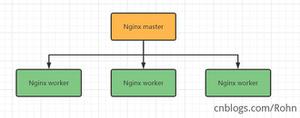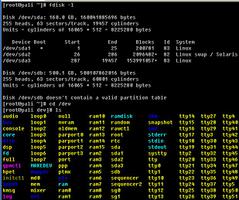Nginx实现浏览器可实时查看访问日志的步骤详解
一、首先查看nginx版本,我使用的是1.9.7的版本,安装目录在/application/nginx-1.9.7
[root@AnSheng ~]# /application/nginx-1.9.7/sbin/nginx -V
nginx version: nginx/1.9.7
built by gcc 4.4.7 20120313 (Red Hat 4.4.7-16) (GCC)
configure arguments: --prefix=/application/nginx-1.9.7 --user=nginx --group=nginx --with-http_stub_status_module
二、检查语法并启动nginx
[root@AnSheng ~]# /application/nginx-1.9.7/sbin/nginx -t
nginx: the configuration file /application/nginx-1.9.7/conf/nginx.conf syntax is ok
nginx: configuration file /application/nginx-1.9.7/conf/nginx.conf test is successful
[root@AnSheng ~]# /application/nginx-1.9.7/sbin/nginx
三、把nginx配置文件" title="nginx配置文件">nginx配置文件内多余的注视行和空行删掉
[root@AnSheng ~]# cd /application/nginx-1.9.7/conf/
[root@AnSheng conf]# egrep -v "#|^$" nginx.conf.default
worker_processes 1;
events {
worker_connections 1024;
}
http {
include mime.types;
default_type application/octet-stream;
sendfile on;
keepalive_timeout 65;
server {
listen 80;
server_name localhost;
location / {
root html;
index index.html index.htm;
}
error_page 500 502 503 504 /50x.html;
location = /50x.html {
root html;
}
}
}
[root@AnSheng conf]# egrep -v "#|^$" nginx.conf.default nginx.conf
四、在nginx配置文件的server标签内加入以下标签和内容
location /logs {
alias /application/nginx-1.9.7/logs;
#Nginx日志目录
autoindex on;
#打开目录浏览功能
autoindex_exact_size off;
#默认为on,显示出文件的确切大小,单位是bytes
#显示出文件的大概大小,单位是kB或者MB或者GB
autoindex_localtime on;
#默认为off,显示的文件时间为GMT时间。
#改为on后,显示的文件时间为文件的服务器时间
add_header Cache-Control no-store;
#让浏览器不保存临时文件
}
五、开启在浏览器打开log文件,如果不开启再点击文件的时候就下载而不是打开
[root@AnSheng conf]# vim mime.types
types {
text/html html htm shtml;
text/log log;
text/css css;
text/xml xml;
.............
六、检测语法,然后让nginx配置生效,在浏览器查看
[root@AnSheng conf]# /application/nginx-1.9.7/sbin/nginx -t
nginx: the configuration file /application/nginx-1.9.7/conf/nginx.conf syntax is ok
nginx: configuration file /application/nginx-1.9.7/conf/nginx.conf test is successful
[root@AnSheng conf]# /application/nginx-1.9.7/sbin/nginx -s reload
打开浏览器输入域名或者IP,后面加上logs,然后点击文件就可以打开了,如果日志随随便便就可以被别人查看是不是很不安全,所以我们要在加一层nginx用户认证。


七、安装httpd-tools,用于帐号密码生成
[root@AnSheng ~]# yum -y install httpd-tools
八、创建认证的账号
[root@AnSheng ~]# htpasswd -c /application/nginx-1.9.7/conf/loguser loguser
New password:
Re-type new password:
Adding password for user loguser
#密码需要输入两次
九、编辑nginx配置文件,在logs的location加入下面的内容
location /logs {
......
alias PATH;
autoindex on;
autoindex_exact_size off;
autoindex_localtime on;
add_header Cache-Control no-store;
auth_basic "Restricted";
#Nginx认证
auth_basic_user_file /application/nginx-1.9.7/conf/loguser;
#认证账号密码保存的文件
}
十、然后再打开的时候就会提示输入账号和密码,登陆之后才可以查看。

十一、总结
以上就是利用Nginx实现浏览器可实时查看访问日志的全部步骤,希望对大家的学习或者工作有所帮助,如果有疑问大家可以留言交流。
以上是 Nginx实现浏览器可实时查看访问日志的步骤详解 的全部内容, 来源链接: utcz.com/a/252520.html








